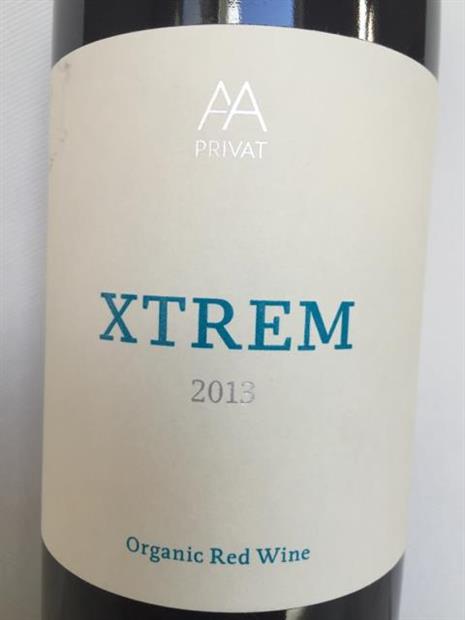
External search
Google (images)
Wine Advocate
Wine Spectator
Burghound
Wine-Searcher
Vintages
2013
2012
2010
From this producer
Show all wines
All tasting notes
|
| Drinking Windows and Values |
| Drinking window: Drink between 2016 and 2019 (based on 2 user opinions) |
| Community Tasting History |
| Alta Alella Producer websitePetite Sirah Varietal character (Appellation America) | P.S. I Love You: A Petite Sirah Advocacy Organization
Petite Sirah is a variety of red wine grape grown in France, California, Israel and Australia. Recently, wineries located in Washington State's Yakima Valley, Maryland, Arizona, West Virginia, Mexico, Chile's Colchagua Valley and Maipo Valley, and Ontario's Niagara Peninsula have also produced wines from Petite Sirah grapes. Though developed in France, it is nearly extinct there as of 2002, hanging on in limited plantings in the Isère and Ardêche regions of the Rhône Valley and in Palette, a tiny appellation in Provence. It is the main grape known in the US and Israel as Petite Sirah with over 90% of the California plantings labeled "Petite Sirah" being Durif grapes; the US Bureau of Alcohol, Tobacco, and Firearms recognizes "Durif" and "Petite Sirah" as interchangeable synonyms referring to the same grape. The grape originated as a cross of Syrah pollen germinating a Peloursin plant. On some occasions, Peloursin and Syrah vines may be called Petite Sirah, usually because the varieties are extremely difficult to distinguish in old age.
The 'petite' in the name of this grape refers to the size of its berries and not the vine, which is particularly vigorous. The leaves are large with a bright green upper surface and paler green lower surface. The grape forms tightly packed clusters that can be susceptible to rotting in rainy environments. The small berries creates a high skin to juice ratio which can produce very tannic wines if the juice goes through an extended maceration period. In the presence of new oak barrels the wine can develop an aroma of melted chocolate.
Petite Sirah produces dark, inky colored wines that are relatively acidic with firm texture and mouth feel. The bouquet has herbal and black pepper overtones, with plum and blackberry flavors on the palate. Compared to Syrah, the wine is noticeably more dark and purplish in color. The wines are very tannic with aging ability that can eclipse 20 years in the bottle.Spain Vinos de España - Wines of Spain (Instituto Español de Comercio Exterior) | Wikipedia
Wine Map on weinlagen-info
Spain is the third largest wine producing nation in the world, occupying the majority of the Iberian Peninsula with vast diversity in climate, culture, and of course, wine. From inky, dark reds of the [Priorat] to dry, white Finos from Andalusia, Spain can easily boast of elaborating a wide variety of notable styles. Within Spain there are currently 62 demarcated wine regions, of which a handful have gained international recognition: [Rioja], Priorat and [Ribera del Duero]. Yet these regions are only a small sample of the high quality wines Spain produces. Regions such as Cava, Penedes, Somontano, Galicia, Rueda and Jerez are only a few of the numerous regions worthy of exploration throughout Spain. Spain can also lay claim to having the most land under vine in the world, growing up to, by some accounts, 600 indigenous varietals of which Tempranillo is their most well known. Other popular varietals include [Garnacha], Bobal and Monastrell for reds and for whites; the infamous [sic] Palomino Fino grape which is used in the production of sherry wine, Pedro Ximenez in Montilla Morilles, Albarino used in the creation of the bright, effervescent wines of Galicia, and Verdejo in Rueda. - Source: - Catavino.net
Spain is not in the forefront of winemaking for its dessert wines, other than for its sweet wines from Sherry country including the highly revered Olorosos (when sweetened). But apart from Sherry Spain has a range of styles of dessert wines, ranging from the those made from the Pedro Ximenez grape primarily in Jerez and Montilla-Moriles) to luscious, red dessert wines made in the Mediterranean from the Garnacha (Grenache) grape. Some good Moscatels are made in Mallorca, Alicante and Navarre. The northwest corner of Spain, Galicia, with its bitter Atlantic climate, is even making dessert wines, called “Tostadillos” in the village of Ribadivia (similar to France’s “Vin de Paille”). The Canary Islands have made interesting dessert wines for centuries (they are mentioned by Shakespeare, for example) and in recent years the quality of winemaking has been improved and the Canary Islands wines are being better marketed now. The winemaking styles for “Vinos Dulces” are also diverse, from “Late Harvest” (Vendimia Tardía) to “Fortified Wines” (Fermentación Parcial). Based on in-spain.info.Catalunya Map on weinlagen-info |
|




